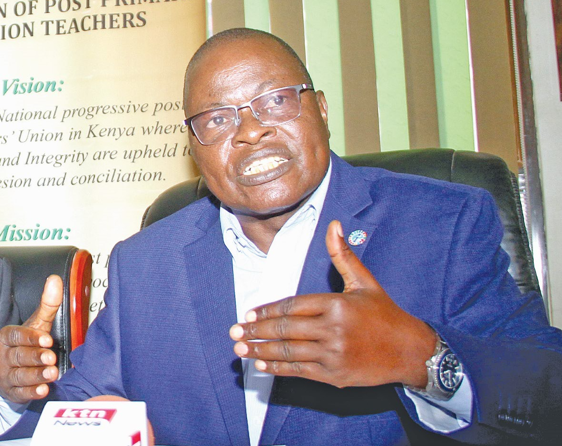The Kenya Union of Post-Primary Education Teachers (KUPPET) has sharply criticised the Teachers Service Commission (TSC) for failing to address the stagnation of thousands of teachers, even as the National Police Service Commission (NPSC) moves to promote long-serving police officers.
In a statement dated August 11, 2025, KUPPET Secretary General Akelo Misori commended the NPSC for promoting officers who have remained in one job group for more than 10 years, without subjecting them to interviews or declaring vacancies.
“The Police Service Commission has shown that it is possible to address stagnation with fairness and urgency,” Misori said, praising the decision as a long-overdue show of commitment to workers.
READ ALSO:
Senende Boys steals show at Music Festival with electrifying Zilizopendwa rendition
According to KUPPET, the NPSC’s directive will see constables, corporals, sergeants, and inspectors who have served for at least a decade—or are above the age of 50—rise in rank.
“This decision restores dignity to officers who have served for more than 10 years in one grade,” Misori added.
In sharp contrast, he accused the TSC of “paying lip service” to the plight of teachers. “For years, teachers have endured unnecessary interviews and bureaucratic hurdles despite their qualifications and long service,” he said.
KUPPET revealed that many stagnated teachers were last promoted in 2009 or 2011, despite having advanced their education.
“Several have earned advanced degrees at their own expense, yet they remain ignored,” Misori lamented.
The union has vowed to take action. “We will send a list of all stagnated teachers to TSC for immediate promotion,” Misori declared, calling on the commission to follow the NPSC’s example and restore fairness in the education sector.
By Joseph Mambili
You can also follow our social media pages on Twitter: Education News KE and Facebook: Education News Newspaper for timely updates.
>>> Click here to stay up-to-date with trending regional stories
>>> Click here to read more informed opinions on the country’s education landscape






